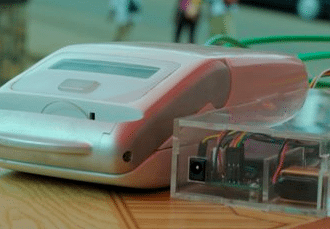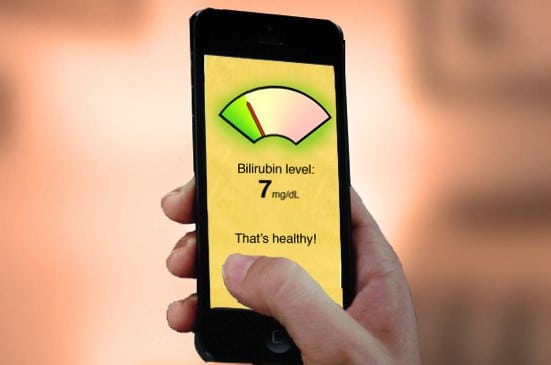Results are in from a test run in Rwanda for a simple handheld device that diagnoses HIV and wirelessly updates patients’ medical records. And they look promising.
The mChip device, which is the abbreviation of the mobile microfluidic chip for immunoassay on protein markers device, returned diagnoses with 100 percent specificity and 99% sensitivity, about as accurate as laboratory-based ELISA kits, according to results published Jan.17th online ahead of print in the journal Clinical Chemistry. (ELISA, by the way, stands for enzyme-linked immunosorbent assay, and it is a commonly used diagnostic tool.)
“We’ve built a handheld mobile device that can perform laboratory-quality HIV testing, and do it in just 15 minutes and on finger-pricked whole blood,” Samuel Sia a biomedical engineer at Columbia University, said in a statement.
“And, unlike current HIV rapid tests, our device can pick up positive samples normally missed by lateral flow tests, and automatically synchronize the test results with patient health records across the globe using both the cell phone and satellite networks,” Sia says.
But one of the most impressive features of the mChip is its simplicity to use. Sia and his team have tried to build a device that anyone can operate without the need for technical training.
How it works
To use the device, a patient pricks his or her finger to draw blood into a capillary tube, then connects the tube to a microfluidic cassette. The cassette comes preloaded with the reagents that react with the antibodies that denote the presence of HIV, if they are in the blood. The user then inserts the cassette into the device and presses a button underneath the LCD screen. That’s it.
When the test is finished, the result will appear on the screen. Then the user will have the option to send the data wirelessly. The data can transmit to a designated email address via satellite or to a mobile phone via SMS.
A look at the hardware
The device has hardware to handle liquid samples, detect signals and communicate wirelessly. It is powered by a single 9-volt battery and controlled by an 8-bit micro-controller and a custom-designed circuit.
For wireless communication, the device has a satellite transceiver that could work worldwide and a standard mobile phone transceiver (GSM/GPRS) that uses local cell towers.
It is battery friendly, consuming less power than an average cell phone. Its average power usage was 0.62 watts, compared to 0.75 watts for cell phones, Sia and his team report.
Field test in Rwanda
The researchers tested the device in Rwanda at Muhima Hospital in the nation’s capital, Kigali, and at two clinics, Projet San Francisco and Projet Ubuzima.
The patients that they tested also underwent separate tests for hepatitis and other sexually transmitted infections. Concurrent infections are known to skew the results of other rapid tests, and Sia’s team wanted to challenge the mChip with real-world conditions.
They tested 167 patient samples from the two clinics. Of those, 99 also tested positive for hepatitis B or C, and 31 tested positive for syphilis, herpes or both. In spite of the potential to confuse the mChip, the device returned highly accurate diagnoses.
“This is an important step forward for us towards making a real impact on patients,” says Dr. Jessica Justman, associate clinical professor of medicine in epidemiology at Columbia who worked with Sia.
“And with the real-time data upload, policymakers and epidemiologists can also monitor disease prevalence across geographical regions more quickly and effectively,” Dr. Justman says.
What’s next
Next, Sia plans to set up an antenatal care panel that would diagnose HIV and sexually transmitted diseases in pregnant women in Rwanda. And he has consumers in the United States in mind, looking into possible uses for his device in US healthcare, he says.

